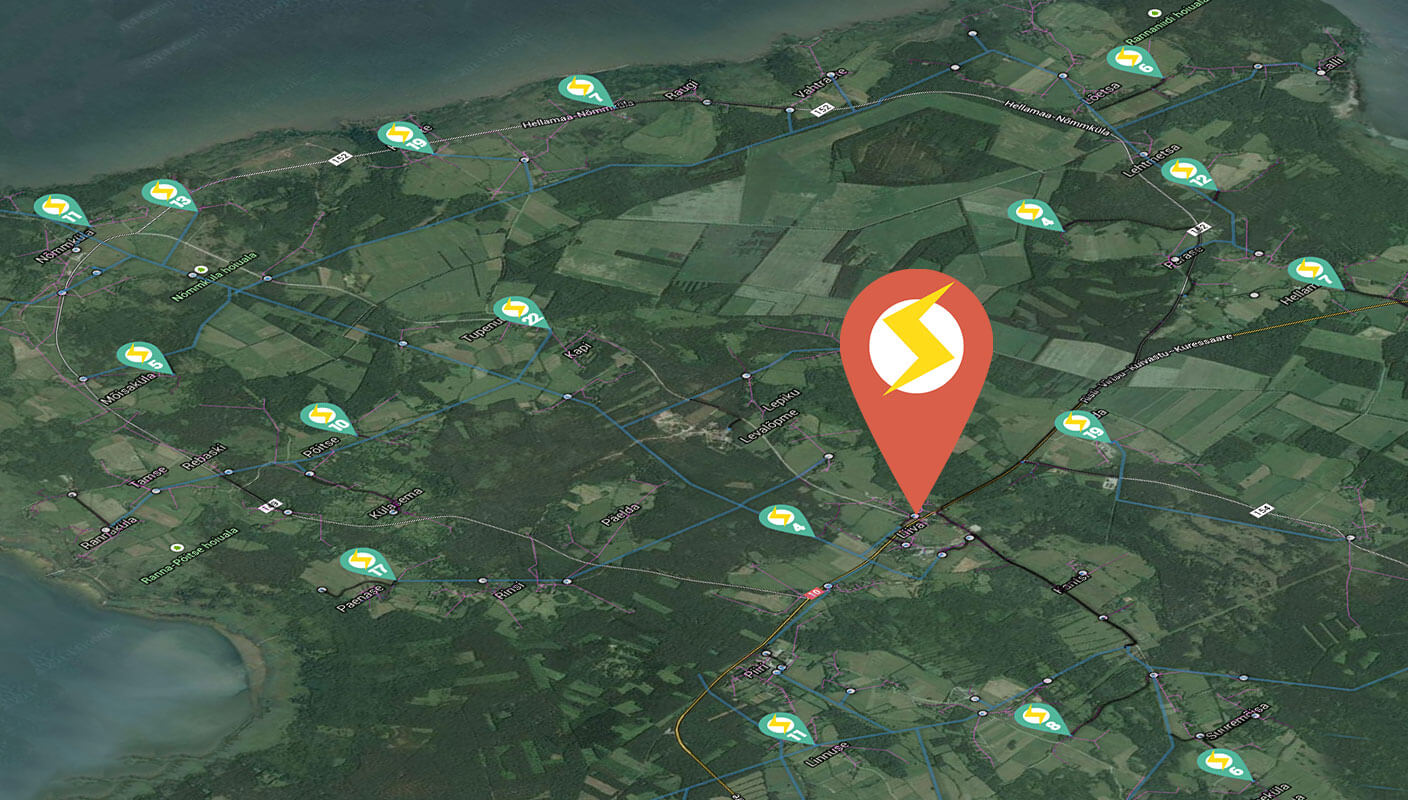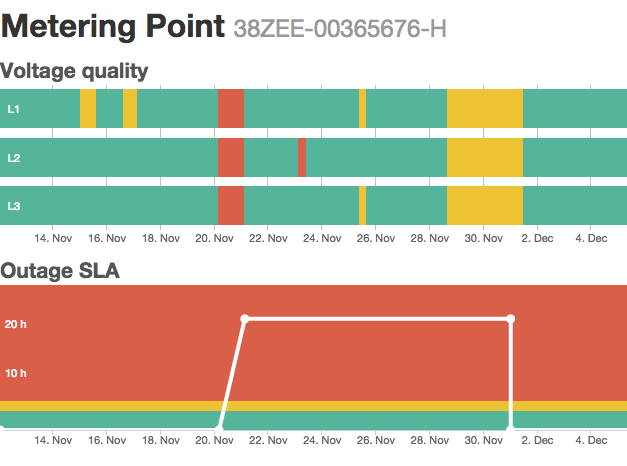
Smart business decisions from smart meters
Estonia is currently half-way through a project replacing all 700 000 electricity meters with smart meters. For end consumers it obviously means no more trouble reporting readings in the end of the month. But the actual goal is to free network operator from the meter read collection hassle and build low-voltage network heartbeat monitoring. We at Codeborne are heavily involved in developing systems like that.
More than just automatic reading
Improving network operator efficiency is the goal of the project, because smart meters do potentially a lot more than transmit consumption data. They provide lots of information about the network status, power supply and smart meter communication quality, outages, unauthorized meter tampering etc. Our task is to raise the automation to a qualitatively new level, where DSO detects a problem before the end customer even notices it. And once the problem is detected, locate it exactly and visualize the depth of the problem. This will add major value in the case of larger network outbreaks where the work of large teams needs to be coordinated (and manpower is in short supply).
In simpler situations the dashboard shows the location of voltage fluctuations, a missing phase or power outages. As the DSO is obliged to guarantee the availability of power according to strict rules (often mandated by the government), then monitoring SLA with every single customer (read: meter) is a must. The low-voltage network monitoring tool enables measuring and visualizing the service level of every single meter.

In this example, the customer SLA was fully in green until 20th of November, when all day long power outage caused the SLA to go in red (number of allowed hours without power during period). From 1st of December, new SLA period started.
Even more, the system enables the DSO to remotely switch on/off smart meters. Useful, for example, when managing bad debt situations. Or more specifically, when doing mass smart meter roll out, DSO can remotely switch on and off large number of customers simultaneously for testing purposes.
Locating problems
For every meter (or concentrator) we show exact location on the map using Google Streetview which makes finding the actual substation or smart meter easier.

In the cities with blocks of flats we even show on what floor the meter is located - unheard precision! To do this we match the meter data with national register of buildings. The result saves valuable time in solving the problems when an engineer arrives with a clear info where to go.
Technical challenges
How to build a reliable communication with the meters? There are two major options out there. First, power line carrier (PLC), where data is traveling to concentrator over electricity cables. This method has lower maintenance costs, but higher potential for data loss. Another option is point to point (P2P), or device with a SIM card and over mobile networks. Reliable, but significantly more expensive. To make a working and not overly expensive solution, we used a combination of both methods - maximised the use of PLC and only where necessary, used P2P. As communication quality is very critical and very important in decision-making, the system gives full overview of communication quality, which gives the DSO information where to switch PLC carrier to P2P, for example.
Adding more value
Ensuring, that 100% of meter data will be transferred to the DSO on time, is pretty much impossible. In the large grids, there is always a meter malfunctioning, communication is down or meter is tampered etc. However, meter read is needed for the billing for both DSO and power supplier company. To solve this problem, we have developed Wizener (read also on how we built it), a tool for smart energy consumption and forecasting. Having that forecasting capability at hand, we fill in the missing readings using reliable prediction when communication has failed and readings are not there on time. The result - no more completely incorrect invoices to the end user because of missing reading data. Even more, we can provide the end customer tips where to save based on consumption patterns and tomorrow’s energy prices.

Given the consumption patterns of this customer and next day’s electricity prices, customer gets recommendations on which hour of the day either to decrease or increase energy consumption. The recommendations may suggest increasing energy usage when the level is already high, but because the prices are low at that time, it makes sense to use the advantage. And vice versa, reducing when the consumption is already low enough, but the price is very high at given time.
What next?
While offering all these features for DSO-s, the next generation of this type of systems should include end user interfaces where customers can get drilled-down overview of their electricity consumption and each consumer specific tips for saving electricity.
Our recent stories
“Backing up” a good product owner
One of the key players in most successful agile projects is a product owner, at least in Codeborne’s practice. Our practice stretches for more than 15 years, during which we have successfully delivered over 100 projects.
Unleashing the power - How Creos partnered with Codeborne to change Luxembourg's energy sector
Creos Luxembourg involved Codeborne in its journey to modernize Luxembourg’s energy sector
Consumer loan system - live in 6 months
Our customer, Luminor, a bank formed from the merger of Nordea’s and DNB’s Baltic operations, sought to modernize its systems.


